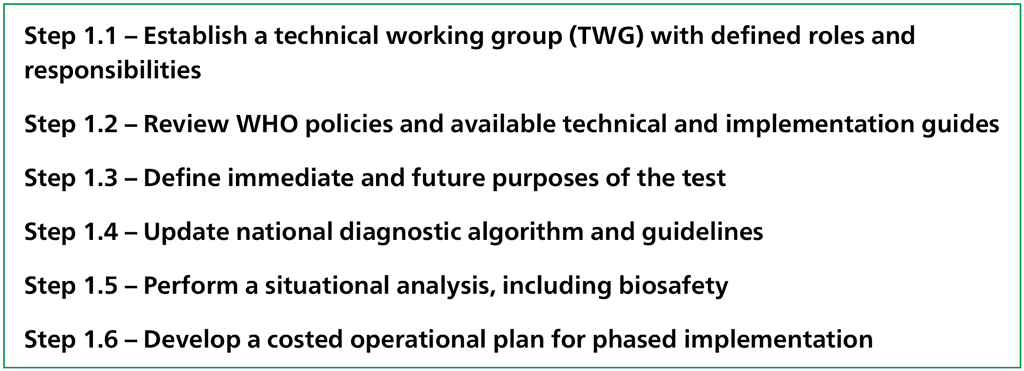5.6 Area 6 – Digital data

Step 6.1 – Develop the use of digital data and diagnostics connectivity
 TB KaSPar
TB KaSPar
 Feedback
Feedback

Step 6.1 – Develop the use of digital data and diagnostics connectivity

Step 5.1 – Develop SOPs
Based on the intended use or uses of the diagnostic test, procedures must be defined, selected, developed or customized for:

Step 4.1 – Review forecasting, ordering and distribution procedures

Step 3.1 – Select, procure, install and set up equipment

Step 2.1 – Complete national regulatory processes

Step 1.1 – Establish a TWG with defined roles and responsibilities
The key steps for implementing a new diagnostic test are organized into 10 main areas. Details for each area are described in this chapter.
The structure of the network and the testing packages available at each level should be tailored to meet the needs of the community and the local epidemiology of TB. When considering placement of a diagnostic test, targets to be considered should be based on demand rather than population, and should include:
The central level (Level III) offers testing that requires highly advanced skills, infrastructure and biosafety precautions. An important expectation at this level is to provide testing to resolve discordant results, troubleshooting, training support to other levels, QA and monitoring, and surveillance.
At the intermediate level (Level II), technologies requiring more sophisticated infrastructure, expertise or biosafety precautions are offered. An important aspect of laboratories at this level is the need for reliable and rapid sample transport networks to transfer samples from peripheral laboratories to the intermediate laboratory, and from the intermediate laboratory to the central laboratory.